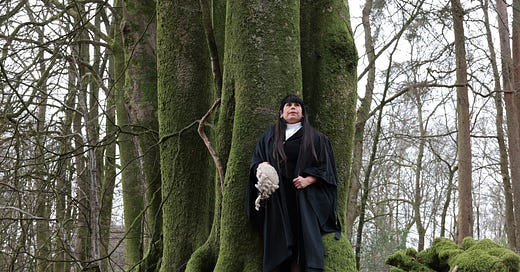This is a quick update to let you know that I had a story in the Guardian’s Long Read section on 8 April. It’s a profile of the barrister Monica Feria-Tinta, who has worked on a series of groundbreaking environmental cases - including the first to successfully argue in an international court that in failing to mitigate climate change, a state could violate citizens’ human rights, and a landmark case arguing that a cloud forest in Ecuador should have its own legal rights. The piece is also about a much wider shift taking place in the world of climate activism, with this type of lawsuit increasingly being used to hold states and corporations accountable for environmental harm, and to provide a legislative backbone to campaigning. In legal terms, this is not a straightforward proposition:
Since the early 1980s, communities and campaigners have turned to the courts to fight back against polluting industries. But traditional environmental claims are geographically specific – as in West Virginia, say, where locals sued the chemical firm DuPont for failing to prevent toxic chemicals from leaking into their water supply. Climate litigation presents very different challenges. A vast number of actors are responsible for emissions, making it hard to establish legal responsibility, and often the worst harms occur in a different continent to the worst emissions. But in the last decade, a series of court cases around the world have sought to change the legal status quo. “It’s been a huge shift,” said Adam Weiss, chief programmes and impact officer at ClientEarth, an environmental law charity that has spearheaded this approach. “Judges now see the environmental issues we’re facing as existential, and have allowed the interpretation of human rights law to shift to grasp that.”
It’s not a silver bullet; put bluntly, states and corporations can ignore lawsuits, which take many years to put together, cost sometimes exorbitant sums and, even in the event of a victory, may be subject to appeals processes. But it’s an increasingly powerful tool in the arsenal, alongside protest, campaigning and political negotiation. I really enjoyed speaking with Monica about her work; she’s from an indigenous background in Peru, and came to the UK as a political refugee, making her an unusual figure in the world of the English bar. She sees this outsider perspective as an asset (many crucial early cases about climate change and rights were fought by indigenous groups around the world), and is idealistic about the law and its power to create incremental change.
You can read the full piece over at the Guardian website - and Monica has a book about her work out now, too.
I also had a story out in Prospect magazine towards the end of April, about the crisis in British maternity services and the insidious problem of racism. The impact of this is starkly evident in the statistics; Black and Asian women are more likely to die in childbirth and to suffer a host of other complications. But what can be done about it? I spoke to Donna Ockenden, the senior midwife in charge of several high profile reviews of failing maternity services, and other experts to try to answer this question.
Ordinarily, I’d talk more in this newsletter about the process of reporting these stories, but I’m going to keep it extra brief this time as I had a baby last month! (After my own, thankfully uneventful journey through British maternity services). As a result, I won’t be reporting or writing much for the rest of this year, though I may pop back into Substack when I feel vaguely sentient. I hope you’ll still be here on the other side of my maternity leave - thanks so much for subscribing and reading thus far. And if you have suggestions for good, easy-to-absorb audiobooks (fiction or non-fiction) and podcasts, I would be delighted to hear them.




